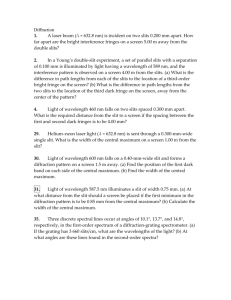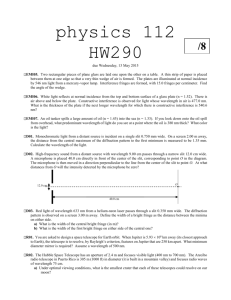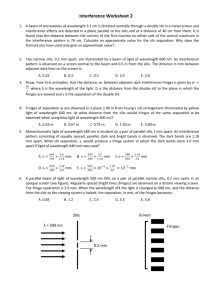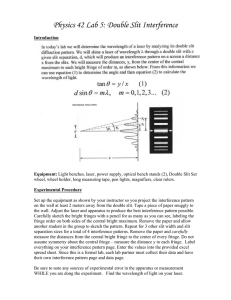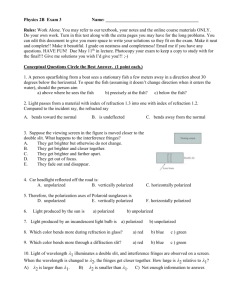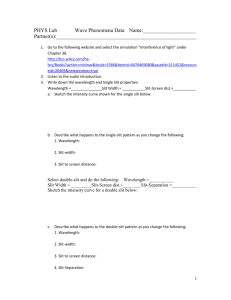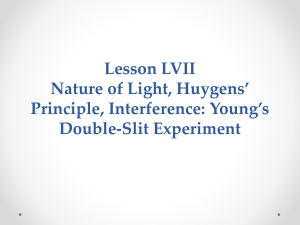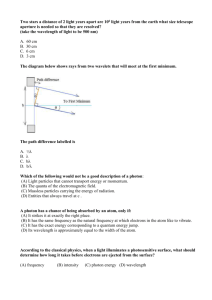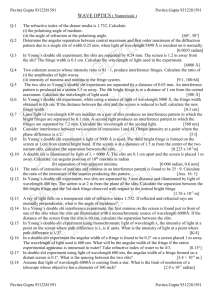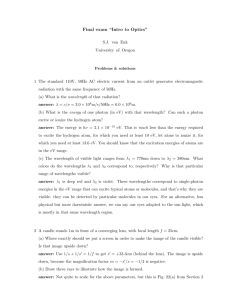Particle or Wave
advertisement
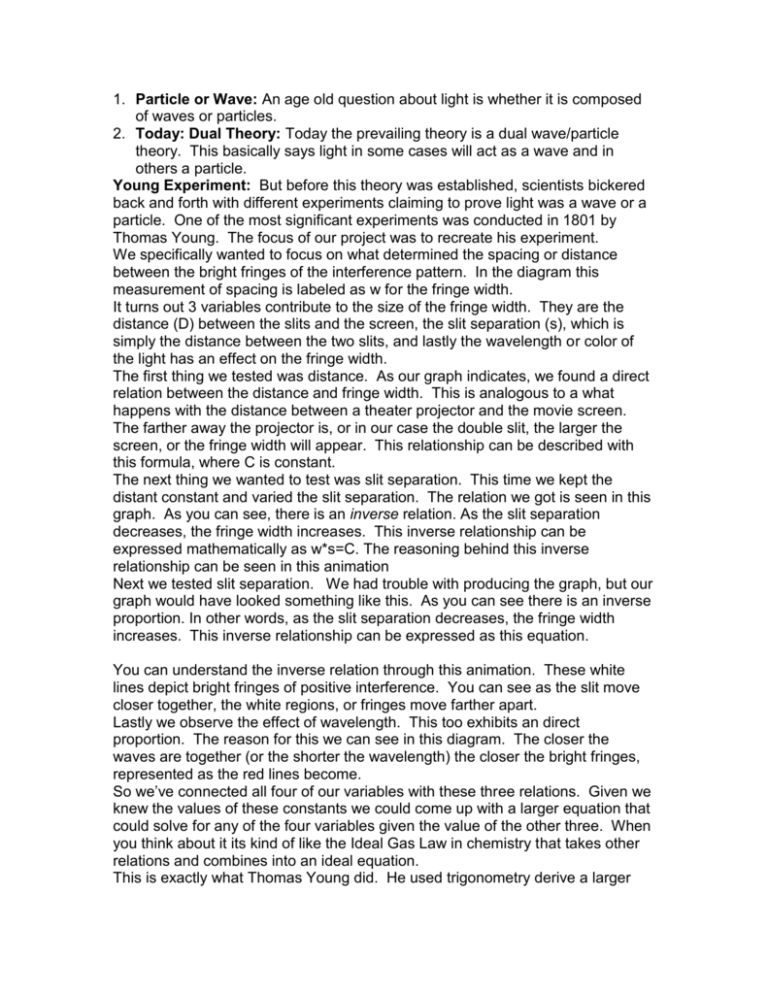
1. Particle or Wave: An age old question about light is whether it is composed of waves or particles. 2. Today: Dual Theory: Today the prevailing theory is a dual wave/particle theory. This basically says light in some cases will act as a wave and in others a particle. Young Experiment: But before this theory was established, scientists bickered back and forth with different experiments claiming to prove light was a wave or a particle. One of the most significant experiments was conducted in 1801 by Thomas Young. The focus of our project was to recreate his experiment. We specifically wanted to focus on what determined the spacing or distance between the bright fringes of the interference pattern. In the diagram this measurement of spacing is labeled as w for the fringe width. It turns out 3 variables contribute to the size of the fringe width. They are the distance (D) between the slits and the screen, the slit separation (s), which is simply the distance between the two slits, and lastly the wavelength or color of the light has an effect on the fringe width. The first thing we tested was distance. As our graph indicates, we found a direct relation between the distance and fringe width. This is analogous to a what happens with the distance between a theater projector and the movie screen. The farther away the projector is, or in our case the double slit, the larger the screen, or the fringe width will appear. This relationship can be described with this formula, where C is constant. The next thing we wanted to test was slit separation. This time we kept the distant constant and varied the slit separation. The relation we got is seen in this graph. As you can see, there is an inverse relation. As the slit separation decreases, the fringe width increases. This inverse relationship can be expressed mathematically as w*s=C. The reasoning behind this inverse relationship can be seen in this animation Next we tested slit separation. We had trouble with producing the graph, but our graph would have looked something like this. As you can see there is an inverse proportion. In other words, as the slit separation decreases, the fringe width increases. This inverse relationship can be expressed as this equation. You can understand the inverse relation through this animation. These white lines depict bright fringes of positive interference. You can see as the slit move closer together, the white regions, or fringes move farther apart. Lastly we observe the effect of wavelength. This too exhibits an direct proportion. The reason for this we can see in this diagram. The closer the waves are together (or the shorter the wavelength) the closer the bright fringes, represented as the red lines become. So we’ve connected all four of our variables with these three relations. Given we knew the values of these constants we could come up with a larger equation that could solve for any of the four variables given the value of the other three. When you think about it its kind of like the Ideal Gas Law in chemistry that takes other relations and combines into an ideal equation. This is exactly what Thomas Young did. He used trigonometry derive a larger equation that could solve for any of these variables. Most important at the time was its ability to solve for wavelength, which is why the equation is written like this. In Young’s time people did not even know for certain that light was a wave, so they certainly didn’t know the wavelength of light. With experiment and formula, however, Young was able to prove light was a wave and calculate its wavelength. His calculations for wavelength turned out to be very close today’s measurements. One of the main purposes of our experimentation was to use this understanding to calculate our own value for the wavelength of the light source we were using. Most of our measurements were done with a neon-helium laser, which is red. From our data, we calculated a wavelength of 610.5 nm for the laser. This actually turned out to be rather close to the actual value of 632.5 nm. The percent error was only 3.5 %.
